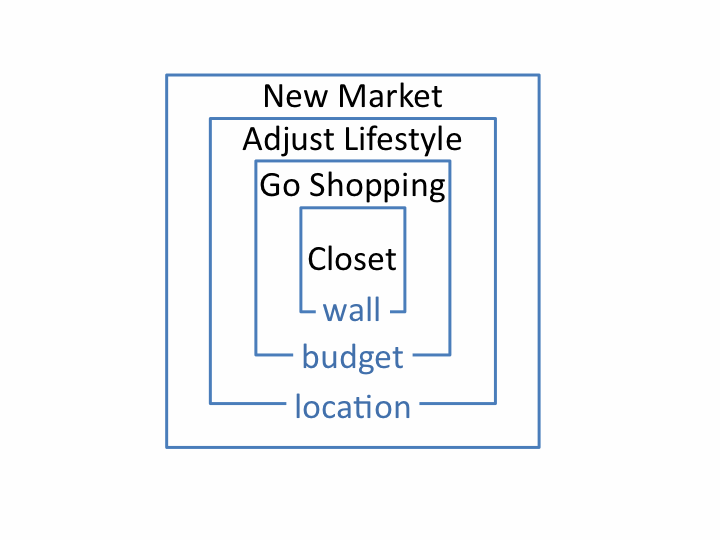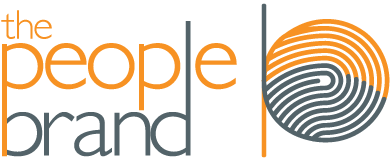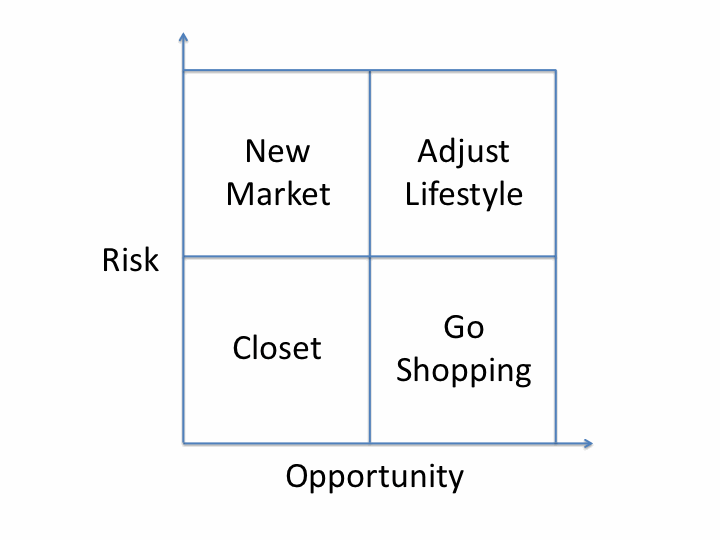In several conversations recently, it became obvious the problem being discussed was how much ability we have to choose for ourselves. How much of our lifestyle, career arc, social circle, etc. are determined by circumstances or other people instead of by our choice?
That is an age-old question beyond the scope of this post. But a smaller (yet important) question we can consider is how to investigate the choices we can influence or control. A simple example is if you aren’t happy with the clothes you’re wearing, you can go to your closet and choose something else. At some point, you may decide the selection of options in your closet is not enough. Now you may simply go shopping. If your taste has become more sophisticated, what you really want to buy may be outside your current budget. Adjusting your budget may require a lifestyle change (i.e. eating out less, working extra, increasing debt, etc.). A more dramatic adjustment would be to search for a new job or relocate to a stronger market.
As you can see, a decision as seemingly trivial as what clothes to wear can become complex when you look beyond your immediate options. Evaluating the amount of risk and opportunity for each option can make your choice more obvious based on your comfort level.
Each of these choices also resides within a boundary. In order to expand your options, you will cross these boundaries. By identifying these tangible or intangible walls, you can better understand the level of effort and amount of change each choice requires.
A similar process can help with more complex decisions like a major purchase or a potential career change.
- List Your Options
Don’t just think about the obvious choices. What changes can you make to expand your options? - Assess Risks and Opportunities
Determine the whether options create more risks and/or opportunities. Also consider what amount of risk you are comfortable with in order to increase your opportunities. - Define Boundaries
Identify what boundaries have to be crossed in order to make certain options available. Determine whether you want to cross these boundaries.
These are just a couple of simple models for decision making. Hopefully they help you with making future choices. There are several other decision models out there. Do you have one you prefer using?

